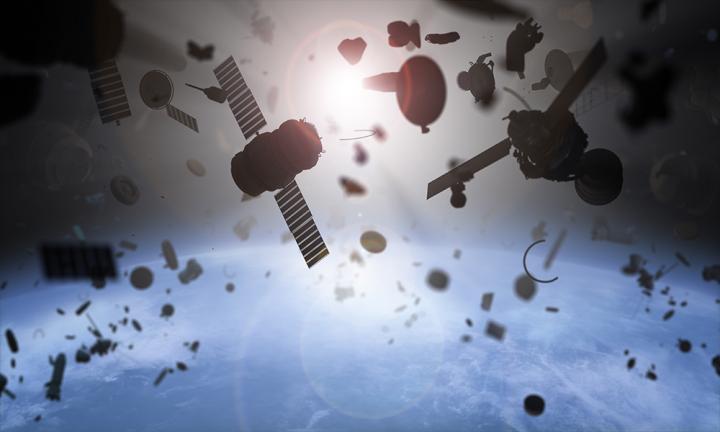Project E.T.PACK, coordinated by UC3M

Credit: Universidad Carlos III de Madrid (UC3M)
Satellites equipped with this kit in the future will be able to deorbit, that is, lower their altitude at the end of life to produce l the reentry and being destroyed by the friction with the Earth’s atmosphere. In this way, the proliferation of space debris in orbit would be prevented. In fact, there are currently many inactive operative satellites in Earth’s orbit: approximately 1,950 are still in working order, while at least 3,000 that have turned into space debris, according to the Space Debris Office of the European Space Agency (ESA). It is estimated that there are approximately 8,400 tons of human- made space material orbiting around the Earth.
“Space debris is one of the major challenges that the aerospace industry will have to take on in the future. These are elements that have been left in orbit as a result of human activity in space, such as the upper stages of rocket launchers and dead satellites,” explained the E.T.PACK Project coordinator Gonzalo Sánchez, Ramón y Cajal researcher in the UC3M Bioengineering and Aerospace Engineering Department. Its objective, when the project will conclude in three years, is to have a prototype of the deorbit kit that could be matured in a next project and be tested in a demonstration flight. This innovation, which has captured the interest of ESA and industries in the space sector has led to two national patents whose European versions are currently under evaluation.
The key to their functioning lies in the low work-function tether. It consists of an aluminum tape coating with a special material that allows it to emit electrons when illuminated by the Sun. The space tether deorbits the satellite thanks to a passive mechanism known as Lorentz force. One of the main challenges of the project is related to materials science, because “the coating on the aluminum tape must have very special characteristics and an important research effort has to be done in thermionic materials, that is, those that readily emit electrons when they are heated,” Professor Sánchez Arriaga explained.
The aluminum tape has some very singular characteristics: a width of 2 centimeters, a thickness of 50 microns (less than a human hair), and several kilometers in length. It would be rolled up in a reel during the launch of the satellite, and would be deployed in orbit to complete its purpose: lowering the satellite’s orbit until it produces its reentry. “It is a technology with a highly disruptive potential. A low work-function tether transform orbital energy into electrical energy while it deorbits the satellite without using any type of fuel,” continued Sánchez Arriaga. “Unlike current propulsion systems, a low work function tether does not need propellant and uses natural resources in the space environment, such as the geomagnetic field, ionospheric plasma and solar radiation,” he added.
E.T.PACK (828902) is a FET-OPEN project coordinated by UC3M and funded by the European Commission with a budget of three million euros, which was launched in March of this year. Research groups and companies from three European countries are participating, such as the Fraunhofer Institute and the Technische Universität Dresden, in Germany, the University of Padova, in Italy, and the Spanish companies SENER Ingeniería y Sistemas, and Advanced Thermal Devices.
###
Media Contact
Javier Alonso
[email protected]
Original Source
https:/



